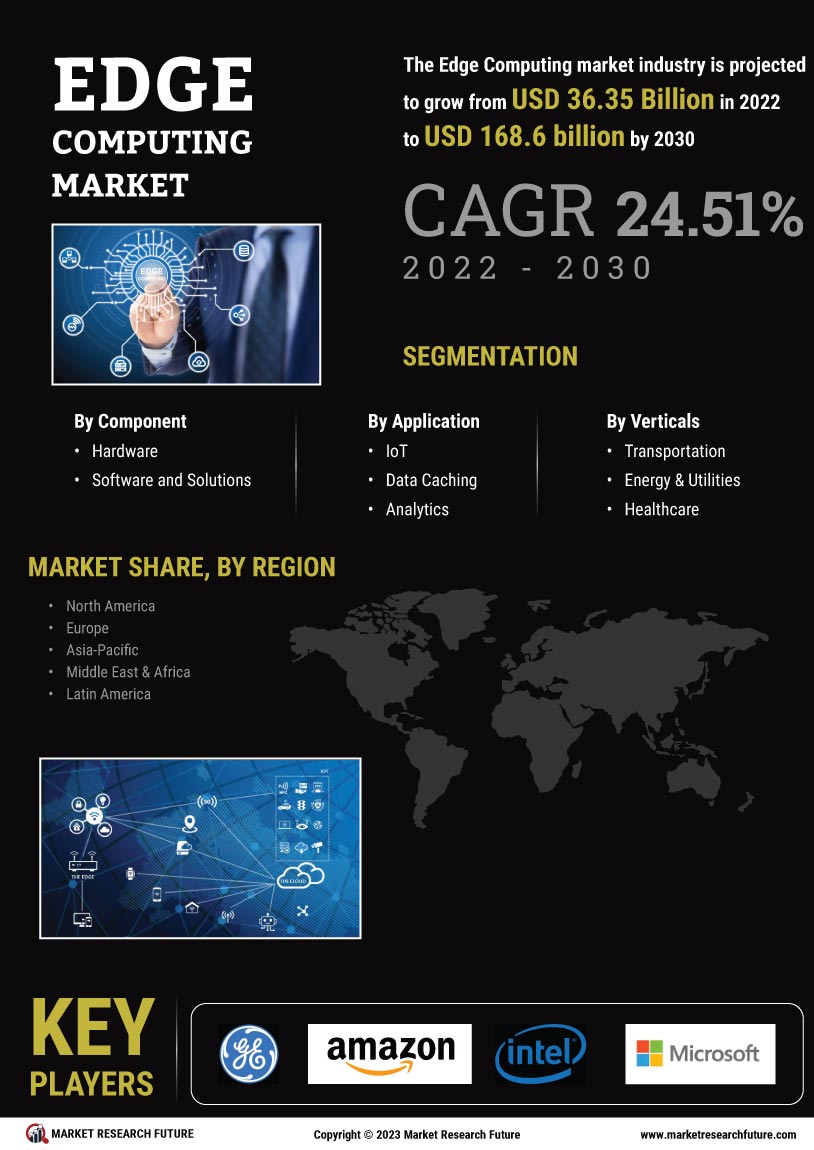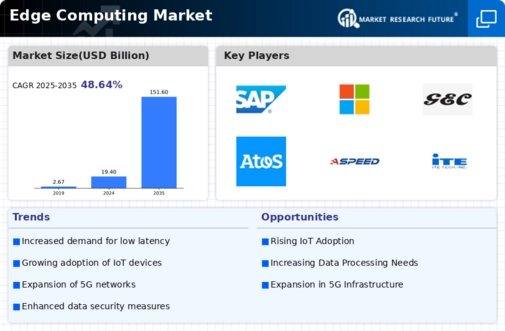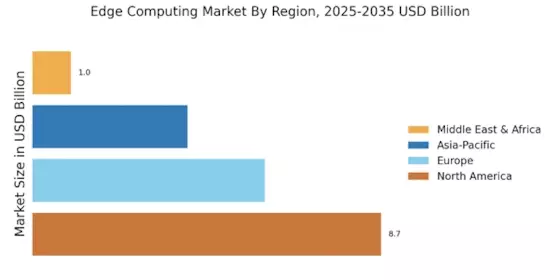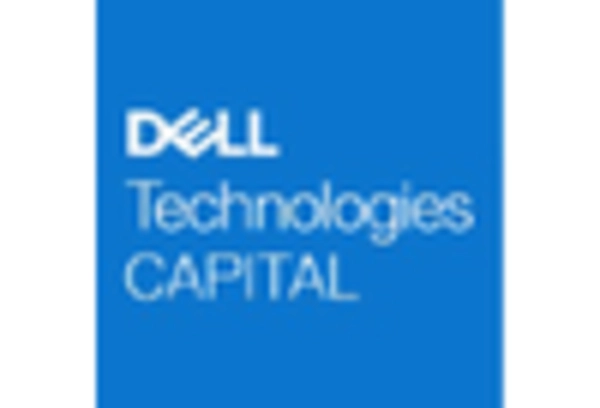The Edge Computing Market is currently characterized by a dynamic competitive landscape, driven by the increasing demand for real-time data processing and the proliferation of IoT devices. Major players such as Amazon (US), Microsoft (US), and IBM (US) are strategically positioning themselves through innovation and partnerships, thereby enhancing their operational focus. Amazon (US) emphasizes its cloud services, integrating edge computing capabilities to optimize data processing at the source. Microsoft (US) leverages its Azure platform to provide robust edge solutions, while IBM (US) focuses on hybrid cloud strategies that incorporate edge computing to facilitate enterprise digital transformation. Collectively, these strategies not only enhance their market presence but also shape a competitive environment that is increasingly reliant on technological advancements and collaborative efforts.
In terms of business tactics, companies are localizing manufacturing and optimizing supply chains to enhance efficiency and responsiveness to market demands. The Edge Computing Market appears moderately fragmented, with a mix of established players and emerging startups. The collective influence of key players is significant, as they drive innovation and set industry standards, thereby shaping the market structure and competitive dynamics.
In August 2025, Amazon (US) announced the launch of its new edge computing service, aimed at enhancing real-time analytics for IoT applications. This strategic move is likely to bolster its competitive edge by providing customers with faster data processing capabilities, thereby addressing the growing need for immediate insights in various sectors, including manufacturing and smart cities. The introduction of this service underscores Amazon's commitment to maintaining its leadership position in the cloud and edge computing space.
In September 2025, Microsoft (US) unveiled a partnership with a leading telecommunications provider to enhance its edge computing offerings. This collaboration is expected to facilitate the deployment of 5G-enabled edge solutions, which could significantly improve connectivity and data processing speeds for enterprises. By aligning with telecommunications, Microsoft (US) is strategically positioning itself to capitalize on the burgeoning demand for high-speed data services, thereby reinforcing its market position.
In July 2025, IBM (US) expanded its edge computing portfolio by acquiring a startup specializing in AI-driven edge analytics. This acquisition is indicative of IBM's strategy to integrate advanced AI capabilities into its edge solutions, potentially enhancing the value proposition for its enterprise customers. By focusing on AI integration, IBM (US) aims to differentiate itself in a competitive market, where data-driven insights are becoming increasingly critical for business success.
As of October 2025, current competitive trends in the Edge Computing Market are heavily influenced by digitalization, sustainability, and the integration of AI technologies. Strategic alliances are playing a pivotal role in shaping the landscape, as companies seek to leverage complementary strengths to enhance their offerings. Looking ahead, competitive differentiation is likely to evolve from traditional price-based competition to a focus on innovation, technological advancements, and supply chain reliability. This shift suggests that companies will need to invest in cutting-edge technologies and foster strategic partnerships to remain competitive in an increasingly complex market.


















Leave a Comment